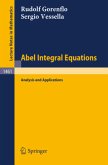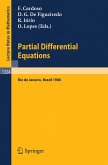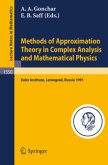The book presents the method of difference potentials first proposed by the author in 1969 and contains illustrative examples and new algorithms for solving applied problems of gas dynamics, diffraction, scattering theory, and active noise screening. The fundamentals of the method are described in Parts I-III and its applications in Parts IV-VIII. To get acquainted with the basic ideas of the method, it suffices to study the Introduction. After this, each of the Parts VI-VIII can be read independently. The book is intended for specialists in the field of computational mathematics and the theory of differential and integral equations, as well as for graduate students of related specialities.
The method of difference potentials (MDP) was proposed in [1]-[8] and sig nificantly developed in [9]-[101] and some other works. The present book describes the current state of the art in the method of difference potentials and is a revised and essentially supplemented version of the author's first book devoted to this method, which was published by "Nauka" in 1987 [100]. This monograph deals with the MDP apparatus and several of its appli cations, particularly to the following problems: 1. the numerical solution ofinterior and exterior boundary-value problems for systems of partial differential equations; 2. the construction of conditions at the artificial boundary ofthe compu tational domain, which equivalently replace the equations and conditions at infinity in stationary problems of gas flowpast immersed bodies as well as in some other steady-state problems; 3. the spectral approach to the construction of artificial boundary con ditions replacing the equations of propagationof physical fields outside the computational domain containing perturbation sources; 4. the construction of artificial boundary conditions on the boundary of the computational domain for numerically solving the scattering problems in large time in a neighborhood of a fixed or a moving scatterer; 5. the statement and solution of stationary mathematical problems of the active shielding of a given subdomain from the influence of perturbation sources located outside the screened subdomain.
The method of difference potentials (MDP) was proposed in [1]-[8] and sig nificantly developed in [9]-[101] and some other works. The present book describes the current state of the art in the method of difference potentials and is a revised and essentially supplemented version of the author's first book devoted to this method, which was published by "Nauka" in 1987 [100]. This monograph deals with the MDP apparatus and several of its appli cations, particularly to the following problems: 1. the numerical solution ofinterior and exterior boundary-value problems for systems of partial differential equations; 2. the construction of conditions at the artificial boundary ofthe compu tational domain, which equivalently replace the equations and conditions at infinity in stationary problems of gas flowpast immersed bodies as well as in some other steady-state problems; 3. the spectral approach to the construction of artificial boundary con ditions replacing the equations of propagationof physical fields outside the computational domain containing perturbation sources; 4. the construction of artificial boundary conditions on the boundary of the computational domain for numerically solving the scattering problems in large time in a neighborhood of a fixed or a moving scatterer; 5. the statement and solution of stationary mathematical problems of the active shielding of a given subdomain from the influence of perturbation sources located outside the screened subdomain.








